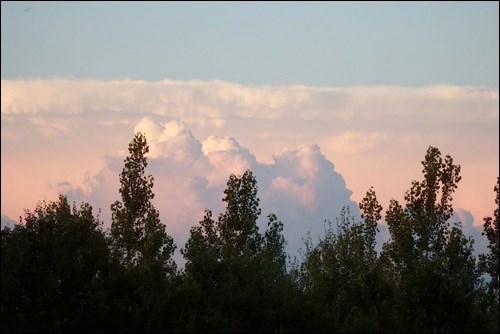Before the first steps were taken in the Industrial Revolution in England 500 years ago, wealth was in the ownership of land bestowed by a monarch on men said to be of noble birth. Wealth was not for the serfs and peasants who worked the land. Energy was in the muscles of human beings, oxen and horses. The energy that heated palace and hovel came from charcoal. The charcoal came from the work of charcoal burners who, along with wood-cutters, were the first tradesmen to begin the deforestation of a tree-covered Europe.
Individual craftsmen produced all that was needed in the lord’s domain. Then came energy from windmills and waterwheels. Then came simple farming machinery. Then came steam engines fed by coal. Mass production by machines took the place of products made by human hands. Workshops became factories in new cities that clustered around important castles and cathedrals. It was believed the new energy sources and methods of production would create more wealth and more jobs. They did, but most of the new wealth went to the factory owners and the money lenders who financed them.
Workers are being displaced now by imports from trading partners where production costs are lower. This is nothing new. When Rome began importing wheat from North Africa, the hilly farms of the Roman territories became obsolete. Unemployed agricultural workers flooded into Rome where the probability of them becoming criminals or revolutionaries was limited by “bread and circuses.” The entertainments were the lethal spectacles of the coliseum where gladiators and wild animals fought to the death. The gladiators and the animals had food and shelter until they died. The men who provided the gladiators and the animals reaped the profits from the deadly displays.
In 2015, we see the number of labourers who produce essential goods and services being cut while employment in the non-essential entertainment industries increases. The entertainment industry includes the performing arts and spectator sports. Spectator sports began in my hometown with playing fields that were freely used and continued, in the euphoria after the Second World War, with a wooden arena in which children could play. Play then was still an undirected activity and a happy pastime for children. In a more impressive facility, now children perform, at great expense to their parents, in competitive spectator sports that help to pay the costs of the arena’s operation. Human activity is rarely envisaged clearly. We move in circles.
Early in the 19th century, weavers and home industries were being threatened by mechanization. People who called themselves Luddites smashed and burned looms and new farming machines. Governments didn’t attempt to control them with bread and circuses. They were apprehended and made to suffer the penalties of what was then a harsh justice system. The profits of mechanization were enjoyed by factory owners and the money lenders who financed them.
Nothing much has changed in 500 years. Mechanization continues. In 2015, diesel-electric railway locomotives are old technology. The wheels are driven by electric motors that are powered by diesel-driven generators. There is no mechanical transmission. Elimination of the transmission enables the locomotive to do more work with less fuel. This drive system is being applied to heavy machinery and will eventually be used in private motor vehicles. Its latest development is in a farm tractor.
Beyond mechanization is automation. In time, the new tractors will be computer-controlled. They will do what they are programmed to do by an operator sitting in a comfortable armchair. Automation will displace even more agricultural workers, the underclass of labourers and even skilled craftsmen. Bread and circuses cannot be a solution for the problem of the newly unemployed. Without generations of workers paying taxes, governments will be unable to maintain the entitlements that provide the necessities of life and health to a growing population who are unable to provide for themselves.
For centuries the profit motive has been the driving force in human activity. The emphasis on profits and the uneven distribution of profits have affected every other aspect of human life and have delayed the hoped-for coming of a world of peace and plenty. The dream of a better world may never come true. Will we never learn that institutionalized greed is a recipe for disaster?
.




